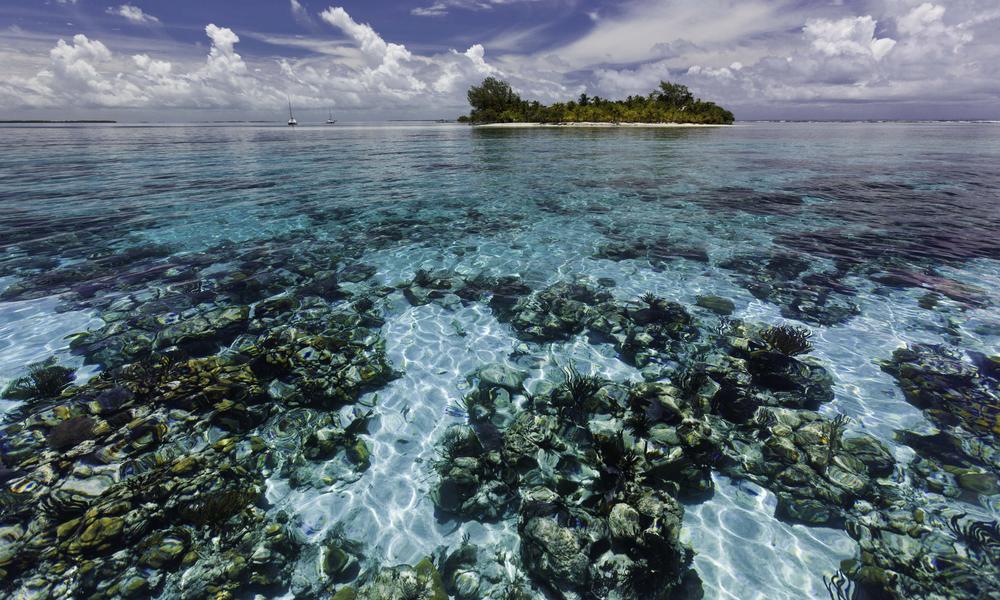

And, surprisingly, it’s not because the reef is so degraded or damaged that it can’t be saved. Approximately 247 taxa of marine flora have been described within the complex and over 500 fish, 65 sceleritian coral, 45 hydroid and 350 mollusc species have also been identified, in addition to a great diversity of sponges, marine worms and crustaceans.This week Unesco, the United Nation’s scientific and cultural agency, removed the Belize Barrier Reef Reserve System, part of the 600-mile long MesoAmerican Reef System, the world’s second largest, from its list of endangered world heritage sites. Major bird colonies include the red-footed booby (Sula sula) on Half-Moon Caye, brown booby (Sula leucogaster) on Man O’War Caye and the common noddy (Anous stolidus) on Glover’s Reef. The property provides important habitat for a number of threatened marine species, harbouring a number of species of conservation concern including the West Indian manatee (Trichechus manatus), green turtle (Chelonia mydas), hawksbill turtle (Eretmochelys imbricata), loggerhead turtle (Caretta caretta), and the American crocodile (Crocodylus acutus) as well as endemic and migratory birds which reproduce in the littoral forests of cayes, atolls and coastal areas. The reef complex is comprised of approximately 450 sand and mangrove cayes. The Barrier Reef and atolls exhibit some of the best reef growth in the Caribbean. Outside of the reef complex the property contains three atolls Turneffe Island, Lighthouse Reef and Glover’s Reef.

The site is one of the most pristine reef ecosystems in the Western Hemisphere and was referred to ‘as the most remarkable reef in the West Indies’ by Charles Darwin. The unique array of reef types within one self-contained area distinguishes the BBRRS from other reef systems. The seven protected areas that constitute the BBRRS comprise 12% of the entire Reef Complex. The largest reef complex in the Atlantic-Caribbean region it represents the second largest reef system in the world. The Belize Barrier Reef Reserve System (BBRRS), inscribed as a UNESCO World Heritage Site in 1996, is comprised of seven protected areas Bacalar Chico National Park and Marine Reserve, Blue Hole Natural Monument, Half Moon Caye Natural Monument, South Water Caye Marine Reserve, Glover’s Reef Marine Reserve, Laughing Bird Caye National Park and Sapodilla Cayes Marine Reserve. State of conservation report by the State Party / Rapport de l’Etat partie sur l’état de conservationīelize Barrier Reef Reserve System removed from the List of World Heritage in Danger The system’s seven sites illustrate the evolutionary history of reef development and are a significant habitat for threatened species, including marine turtles, manatees and the American marine crocodile.

The coastal area of Belize is an outstanding natural system consisting of the largest barrier reef in the northern hemisphere, offshore atolls, several hundred sand cays, mangrove forests, coastal lagoons and estuaries. It is Belize’s top tourist destination, popular for scuba diving and snorkeling and attracting almost half of its 260,000 visitors.

The Belize Barrier Reef is a 300-kilometer (190 mi) long section of the 900-kilometer (560 mi) Mesoamerican Barrier Reef System, which is continuous from Cancún on the north-eastern tip of the Yucatán Peninsula through the Riviera Maya and up to Honduras, making it the third largest coral reef system in the world after the Great Barrier Reef in Australia.
#Belize barrier reef series
The Belize Barrier Reef Reserve System (BBRRS) is a series of coral reefs straddling the coast of Belize, roughly 300 meters (980 ft) offshore in the north and 40 kilometers (25 mi) in the south within the country limits. Photo: Snorkeling Dives, Loggerhead (Some rights reserved)


 0 kommentar(er)
0 kommentar(er)
